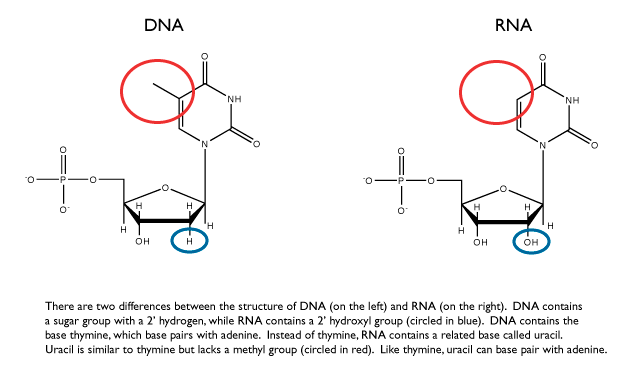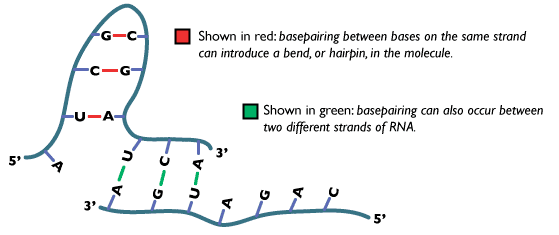
All of the information required to build and maintain an organism is contained in DNA. In order to access and use this information, part of the genome is transcribed, or recopied, into a second type of molecule called ribonucleic acid, or RNA. RNA plays several different roles in the cell.
One strand of DNA is used as a template for synthesizing RNA so that the resulting RNA molecule has a structure and sequence very similar to the DNA used to generate it. An RNA molecule closely resembles DNA, but has several key differences.
RNA has a 2’ OH group on the sugar, and thus contains the sugar ribose instead of 2’deoxyribose. Also, RNA contains the base uracil in place of thymine. Like thymine, uracil is a pyrimidine that base pairs with adenine. The structures of a thymine-containing nucleotide found in DNA and a uracil-containing nucleotide found in RNA are drawn below for comparison.

Unlike DNA, which is composed of two complementary strands that form the double helix, the vast majority of RNAs in a cell are present as single-stranded molecules. RNA can, however, fold into complex structures through the base pairing of regions of short complementarity, either on the same strand or with a second strand, as drawn below.

The stretches of RNA that are paired must be oriented in an antiparallel fashion. The complex structures that result allow RNA to function in several different ways in the cell.